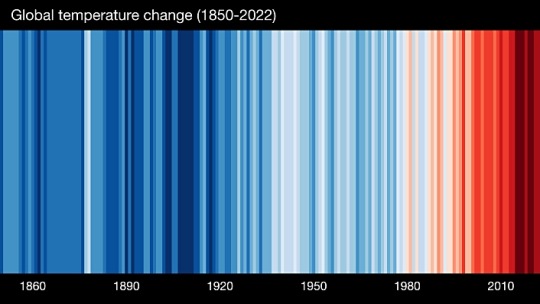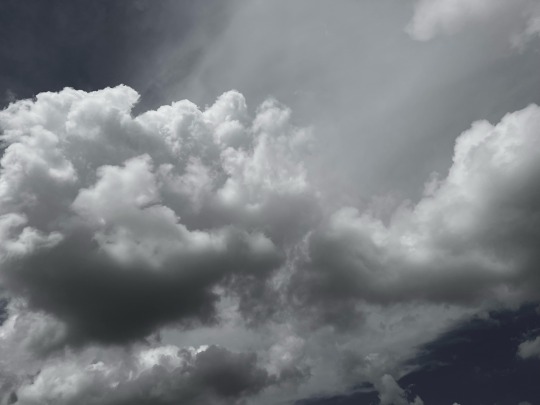#meteorologist
Text
I had to pretend I got a job at as a meteorologist because it was the only non strange reason I was trying to figure out the weather patterns. My family wanted to see my place of work so I decided to fall out of bed and break my leg to prevent this.
424 notes
·
View notes
Text

Sigh. I’m not a meteorologist who can promise you a calendar of endless summer days.
(Ghost Rider/Wolverine: Weapons of Vengeance Alpha #1)
#ghost rider/wolverine: weapons of vengeance alpha#x-men#Storm#ororo munroe#kitty pryde#shadowcat#meteorologist#sassy#flashback#mutants#benjamin percy#geoff shaw#marvel comics#comics#2020s comics
25 notes
·
View notes
Text
🚨 Meteorologist says what happened at Red Rocks "was completely preventable and frankly shouldn't have happened"
FITFWT Red Rocks, 21 June 2023 x
#you would think the venue would know how to monitor the weather conditions or consult experts#meteorologist#FITFWT Red Rocks#21 June 2023#hail storm#mine
41 notes
·
View notes
Text
I'm so glad I dove headfirst into meteorology without knowing just how complex the math involved was. My high school didn't offer calculus, and freshman year was an entire year of calculus, followed by a year of differential equations sophomore year, and then you finally started real meteorology classes junior year. We were 4 classes from a math minor without trying to be, and the complex math lasted all the way through grad school. If I had known I'd be doing math that involved more Greek letters than Arabic numerals, I bet I would have chosen a different path... I was too focused to do anything else... 😄

#Montana #Billings #Q2 #KTVQ #MTN #Wyoming #meteorology #meteorologist #math #calculus #weather #wx #mtwx #wywx
19 notes
·
View notes
Text

Kat Campbell, meteorologist, and her doggo, Jazzy
10 notes
·
View notes
Text
📸 Look at this post on Facebook

10 notes
·
View notes
Text

Balfour Stewart, the Scottish meteorologist and geophysicist was born on November 1st 1828 in Edinburgh.
Described as “an intellectually precocious child”, Stewart entered St-Andrews University at age thirteen, subsequently transferring to the University of Edinburgh to study natural philosophy. Bending to parental pressures, upon graduating he embarked on business, which he however abandoned and return to the University of Edinburgh in 1853 as an assistant to the noted physicist and glaciologist Professor James David Forbes.
In 1859 he became Director of Kew Observatory, where he remained until 1870, and finished his career as Porfessor of Physics at Owens College in Manchester. He was elected to the Royal Society in 1862, awarded their Rumford Medal in 1868, and was elected to the Royal Astronomical Society in 1867.
In his later years, Stewart became interested in the the compatibility between science and religious, and also launched himself into the scientific study of psychic phenomena. These, in particular, drew very mixed reviews, to the point that his friend and colleague Peter Guthrie Tait (1831-1901), in the obituary he wrote in memory of Stewart, described him as a "one of the most loveable of men, modest and unassuming, but full of the most weird and grotesque ideas"
Balfour Stewart was severely wounded in 1870 in a train crash from which he never fully recovered, he died on 18 December 1887.
There is much more on the man, including his Orcadian connections here https://www.aboutorkney.com/.../balfour-stewart-m-a-ll-d.../
10 notes
·
View notes
Text
A TV meteorologist in Des Moines resigned as a result of harassment from climate deniers.
A small but loud and aggressive group on the far right thinks it can cancel science when it contradicts their ideological extremism.
After spending the last two years as chief meteorologist at Des Moines news station KCCI, a CNN affiliate, (Chris) Gloninger announced Wednesday he is resigning as one of the many faces of local TV weather.
His departure comes months after receiving a series of harassing emails from a viewer who disagreed with one thing he did on-air: he explained how weather was linked to the climate crisis. He also received other negative feedback via private messages and social media, which has become a common experience for weather and climate communicators.
The decision was not easy, Gloninger told the Washington Post, but in a tweet announcing his exit, he cited a “death threat stemming from my climate coverage” which he said resulted in post-traumatic stress.
Death threats directed at people advocating real science are nothing new. We know how Galileo was persecuted by the Catholic Church for daring to prove Copernicus correct.
The emails from the viewer, according to screenshots Gloninger’s tweeted, called the meteorologist a “liberal conspiracy” theorist and told him to “go east and drown from the ice cap melting.”
It escalated last summer when he received a more menacing threat from the viewer.
“It is mentally exhausting and at times I have not been ok,” Gloninger tweeted at the time. “The threat of course was concerning, but the stream of harassing emails is even more distressing.”
Gloninger said he plans to “embark on a new journey dedicated to helping solve the climate crisis,” in addition to spending more time with family. His last day is on July 7.
A statement from KCCI about his departure said Gloninger plans to go into climate consulting: “Gloninger is leaving television to focus on caring for his family and his own mental health. He plans to pursue work in climate consulting.”
Gloninger’s experience is not an isolated one. Climate change has become a highly politicized topic, despite hundreds of global scientists concluding it is “unequivocal” that humans have caused the crisis and that “widespread and rapid changes” have already occurred around the world.
Climate communicators, journalists, meteorologists and national weather services, including those in the US, Spain and Australia, have reported an increase in harassment, threats and abuse for connecting extreme weather events to climate change.
Some climate stripes to stick it to those halfwit climate deniers.

There's an organization called 3.14 Action which is dedicated to electing more people with a science background to Congress and to public office in general.
3.14 Action | Electing scientists who will use evidence and facts to fight climate change and fix our broken healthcare system.
One of their successes in 2022 was helping meteorologist Eric Sorensen get elected to the US House from a swing district in Illinois.
Science is science, it's not something you bend to fit your ideology.
#climate change#chris gloninger#meteorologist#des moines#kcci#climate deniers#maga zombies#harassment#science is science#climate stripes#314 action#eric sorensen#il-17#us house of representatives
14 notes
·
View notes
Photo

Laura Tobin 🇬🇧
On the set of Good Morning Britain
lauratobinweather
#laura tobin#television presenter#weather girl#meteorologist#british#english#brunette#orange sweater#plaid skirt#black tights#pantyhose#black boots#smile#english rose#worldie#classy#poisonsome
30 notes
·
View notes
Text
This is what an erupting volcano looks like from space.
📽: NASA Johnson
—
A fortuitous orbit of the International Space Station allowed the astronauts this striking view of Sarychev Volcano (Kuril Islands, northeast from Hokkaido in Japan to Kamchatka Peninsula in Russia) in an early stage of eruption on 12 June 2009.
Sarychev Peak is one of the most active volcanoes in the Kuril Island chain, and it is located on the northwestern end of Matua Island.
Prior to June 12, the last explosive eruption occurred in 1989, with eruptions in 1986, 1976, 1954, and 1946 also producing lava flows.
Ash from the multi-day eruption has been detected 2,407 kilometers east-southeast and 926 kilometers west-northwest of the volcano.
Commercial airline flights are being diverted away from the region to minimize the danger of engine failures from ash intake.
This detailed astronaut photograph is exciting to volcanologists because it captures several phenomena that occur during the earliest stages of an explosive volcanic eruption.
The main column is one of a series of plumes that rose above Matua Island on June 12.
The plume appears to be a combination of brown ash and white steam. The vigorously rising plume gives the steam a bubble-like appearance.
In contrast, the smooth white cloud on top may be water condensation that resulted from rapid rising and cooling of the air mass above the ash column.
This cloud, which meteorologists call a pileus cloud, is probably a transient feature: the eruption plume is starting to punch through.
The structure also indicates that little to no shearing wind was present at the time to disrupt the plume.
(Satellite images acquired 2-3 days after the start of activity illustrate the effect of shearing winds on the spread of the ash plumes across the Pacific Ocean.)
By contrast, a cloud of denser, gray ash — probably a pyroclastic flow — appears to be hugging the ground, descending from the volcano summit.
The rising eruption plume casts a shadow to the northwest of the island.
Brown ash at a lower altitude of the atmosphere spreads out above the ground at image lower left.
Low-level stratus clouds approach Matua Island from the east, wrapping around the lower slopes of the volcano.
Only about 1.5 kilometers of the coastline of Matua Island are visible beneath the clouds and ash.
Credit: NASA Earth Observatory
#volcano#space#NASA#International Space Station#Sarychev Volcano#Sarychev Peak#Matua Island#volcanologist#volcanology#volcanic eruption#meteorologist#pyroclastic flow#Kuril Islands#Japan#Russia
4 notes
·
View notes
Photo

WZMB.
Happy Halloween!
48 notes
·
View notes
Text


texas storm in august / 8.16.22
#weather#thunderstorms#storm clouds#stormy weather#dark clouds#rain#rainstorm#thunderclouds#thunder#lightning#rainy weather#forecast#meteorology#meteorologist#photography#nature#nature photography#lovergirlstyping#lovergirlsdreaming
46 notes
·
View notes
Text
4 notes
·
View notes
Text

Maybe 2023 will be the year I actually make my comic a physical reality. It'll be a lot if work, but if I keep my mind to it, it's possible
#daily doodle#my art#original characters#weather or not#ocs#original character#oc#comic#project won#comic cover#original comic#Nate Colefield#Brian Chase#meteorologist#weather comic#WON
7 notes
·
View notes
Photo



Kat Campbell, meteorologist
28 notes
·
View notes
